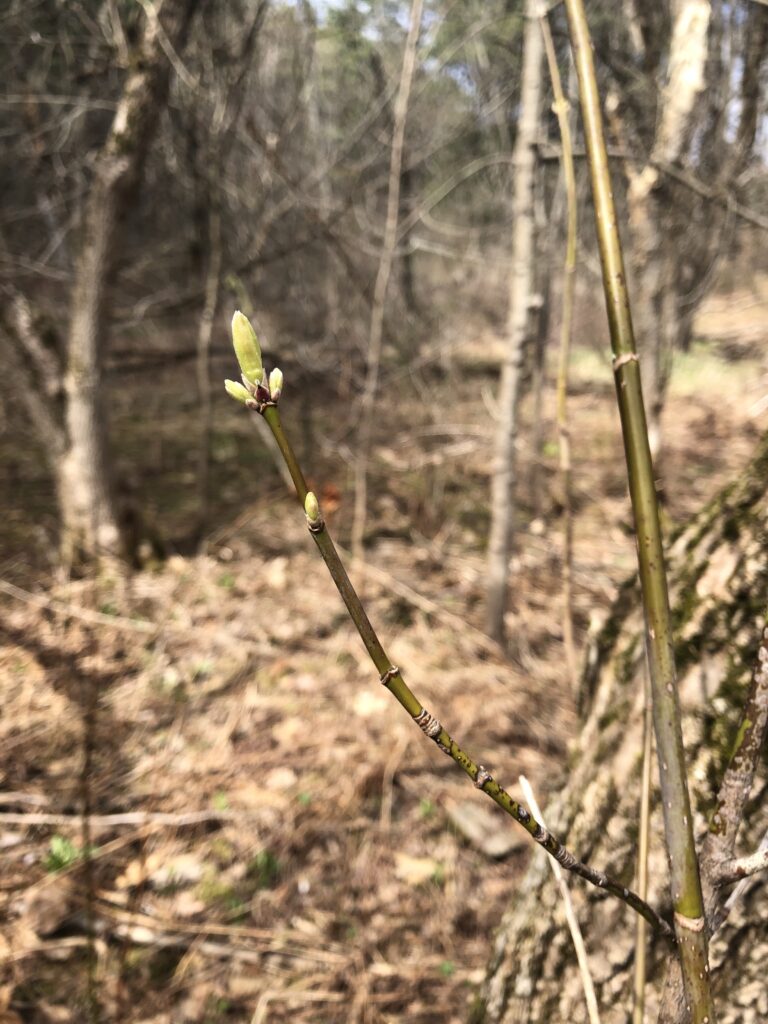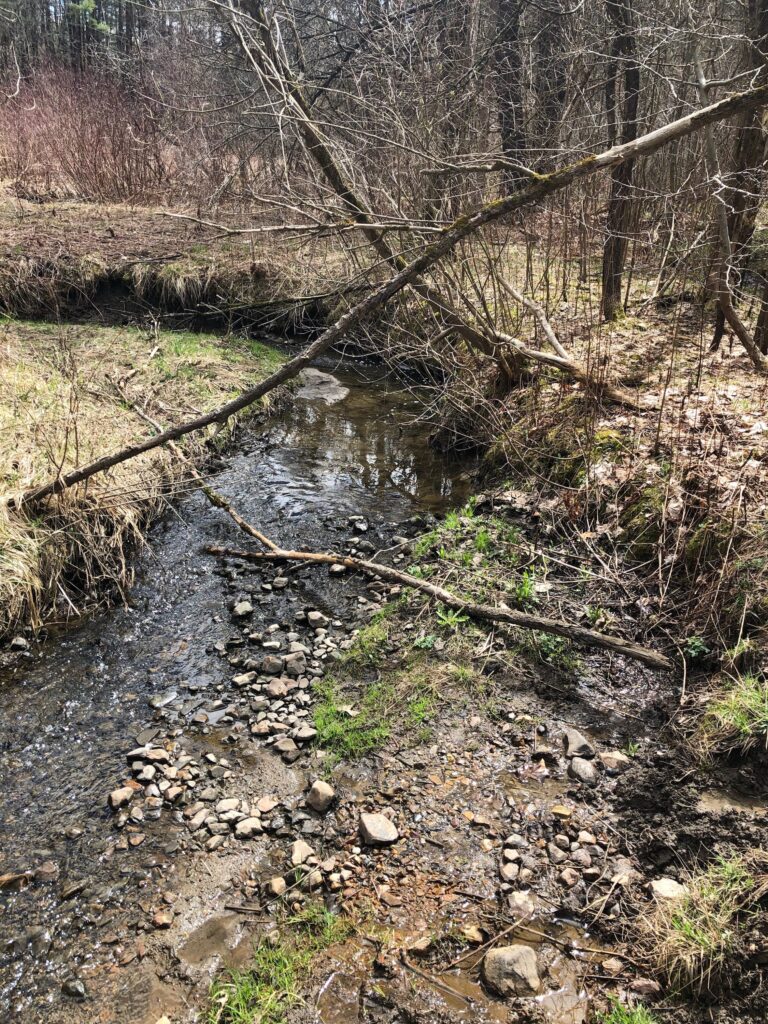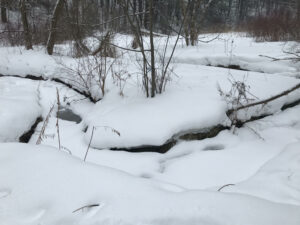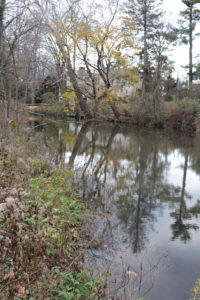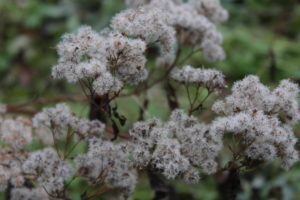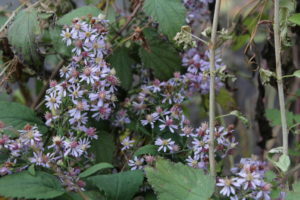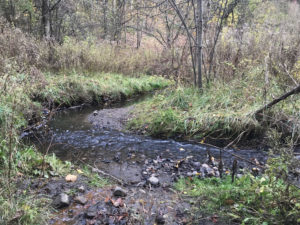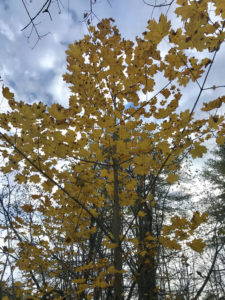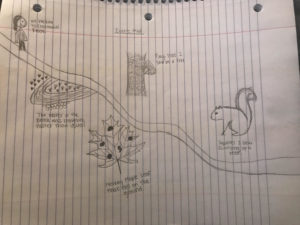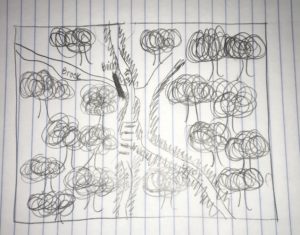As part of my last week here, I visited my phenology spot for the final time. It looked pretty similar to the week before but it was hard to tell what had changed since it was rainy outside; everything looked gloomy. Signs of spring were still appearing but no plants had actually flowered yet. I did not see any birds but I know I heard a woodpecker. I also saw some water bugs floating on top of the brook.
Nature and culture intertwined at Centennial Brook by being easily accessible to almost everyone. It’s easily accessible to us college students, it’s easily accessible to the neighborhood that lives in front of it, and it’s easily accessible to anyone who lives in the Burlington/South Burlington area. Anyone can hike in Centennial and be able to connect themselves to the great outdoors there. They can explore the trails and feel connected with nature as well as themselves.
My phenology spot, Centennial Brook, has become a big part of my freshman year here at UVM. Although, I would not say that it is a part of me. This is because I feel as though the spot is not exactly the kind of spot I wanted to post about for the year. The reason I did not change spots is because Centennial is easily accessible and having no car here, I cannot easily access other places. The Centennial Brook was a nice spot, but I do not have the feelings for it that I wish I did. That being said, I know whenever someone mentions Centennial I will think of the brook and reminisce this project.
